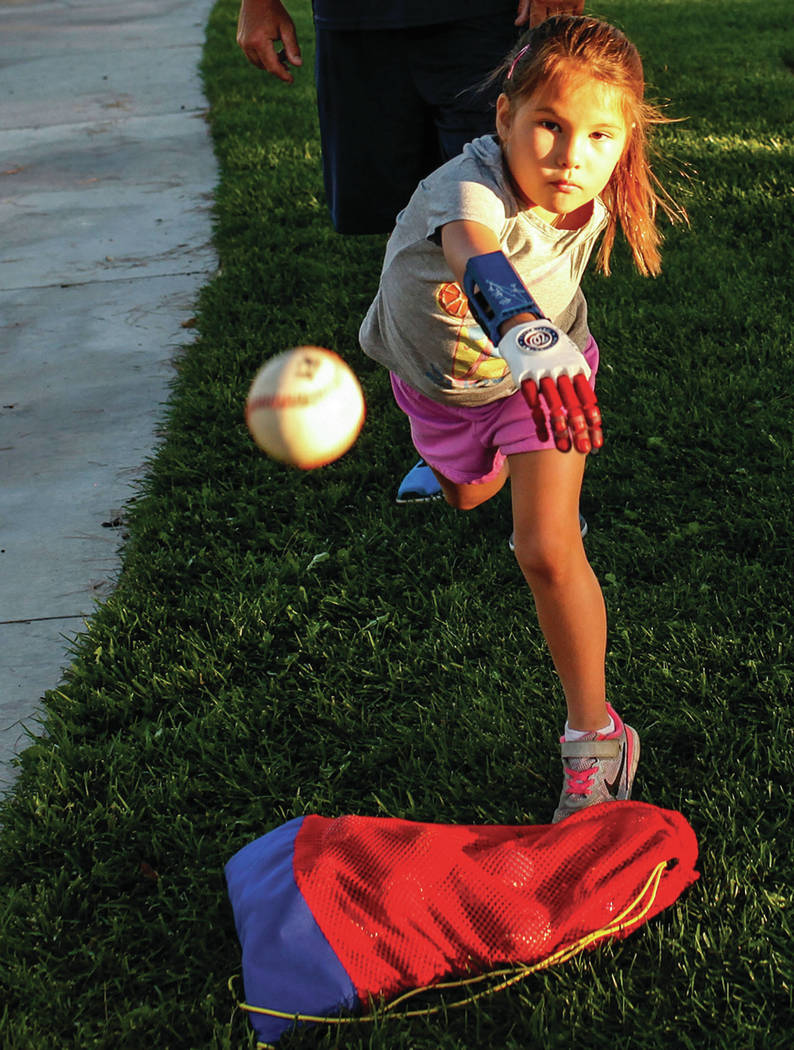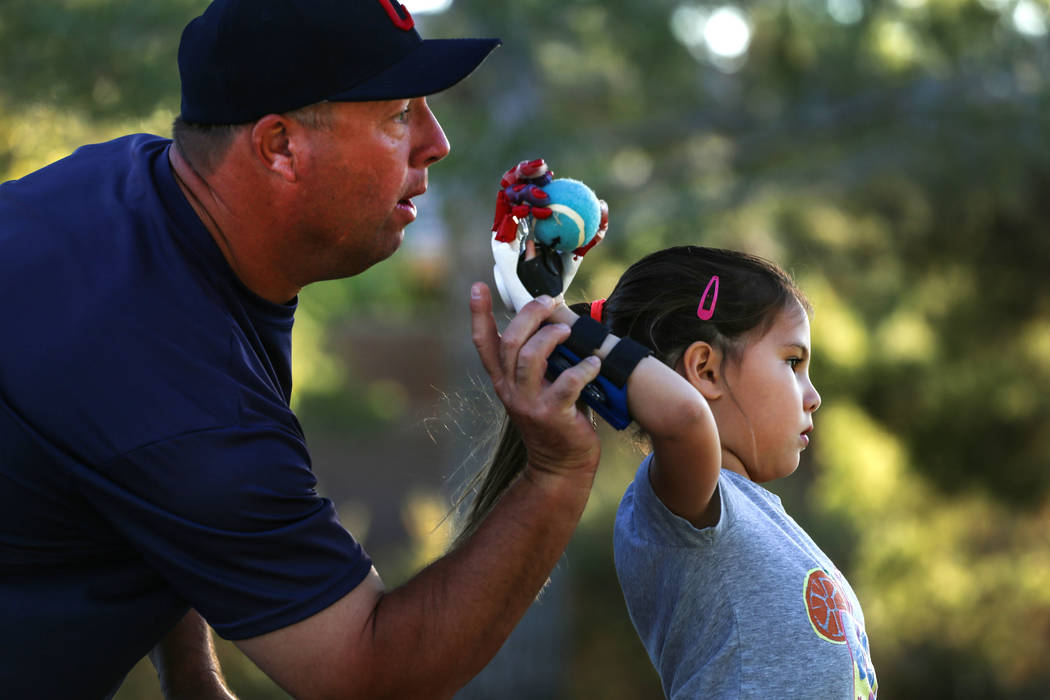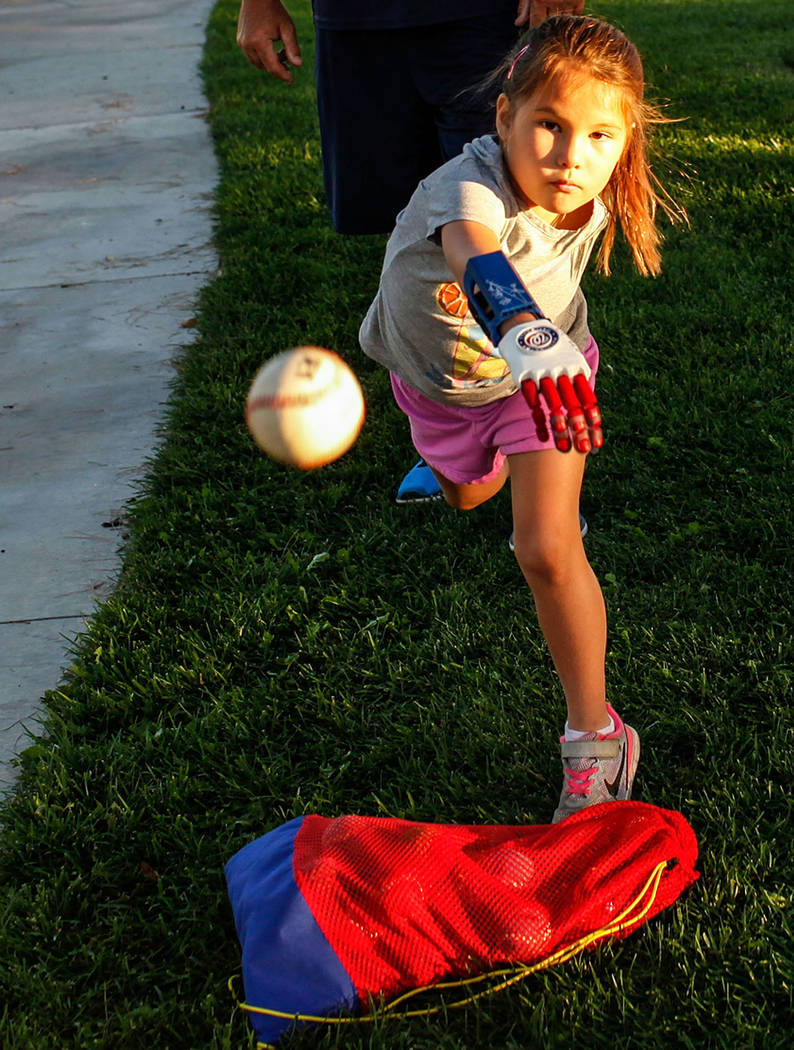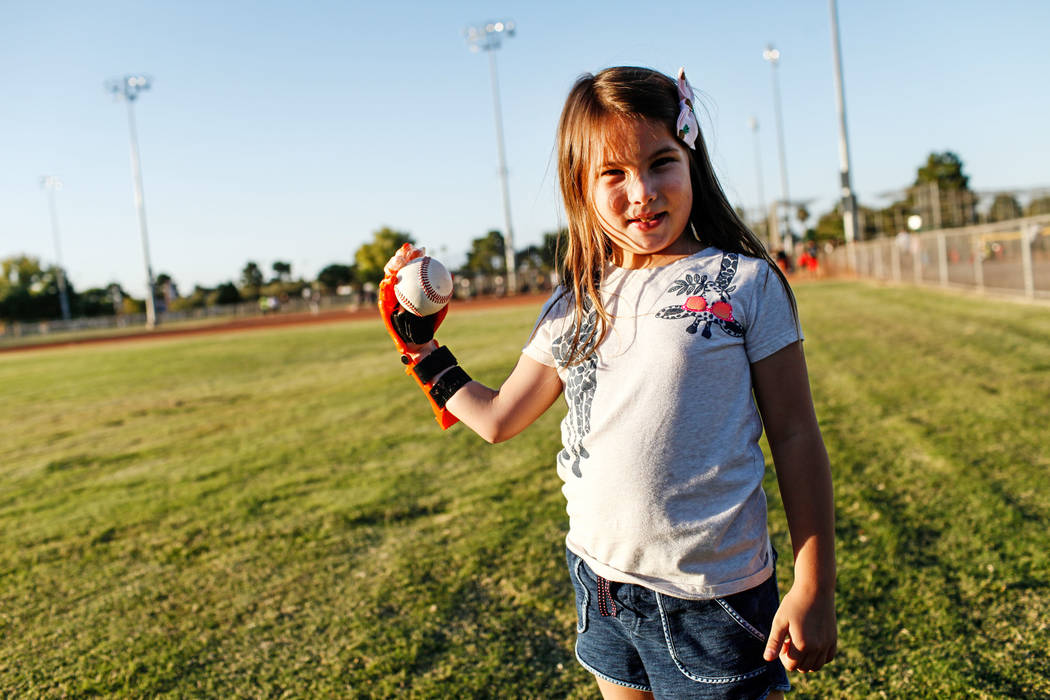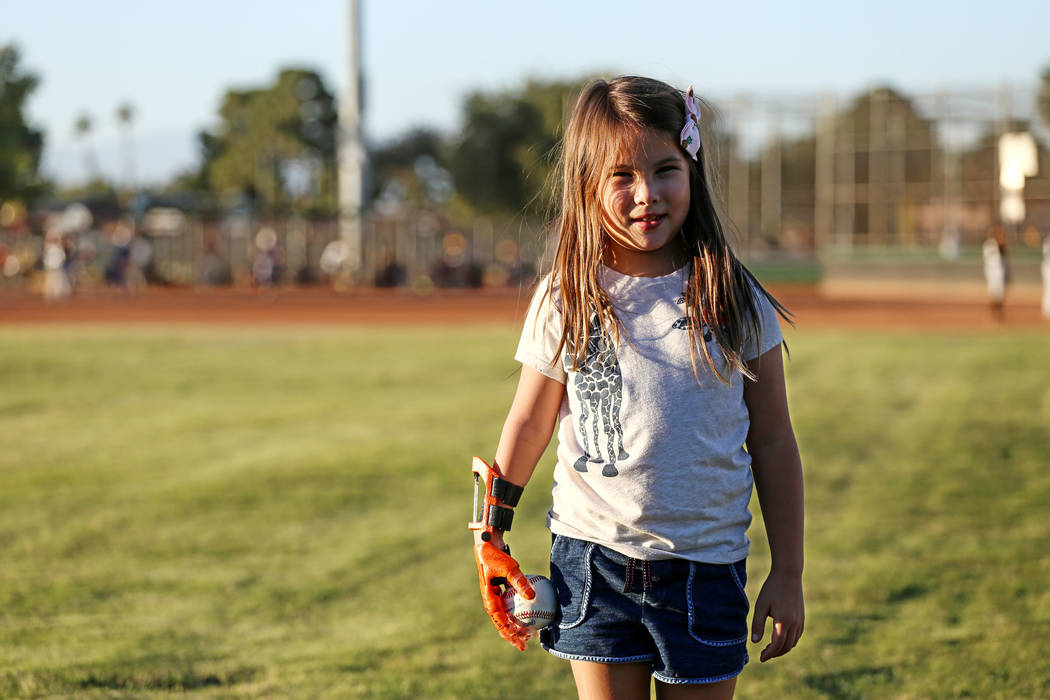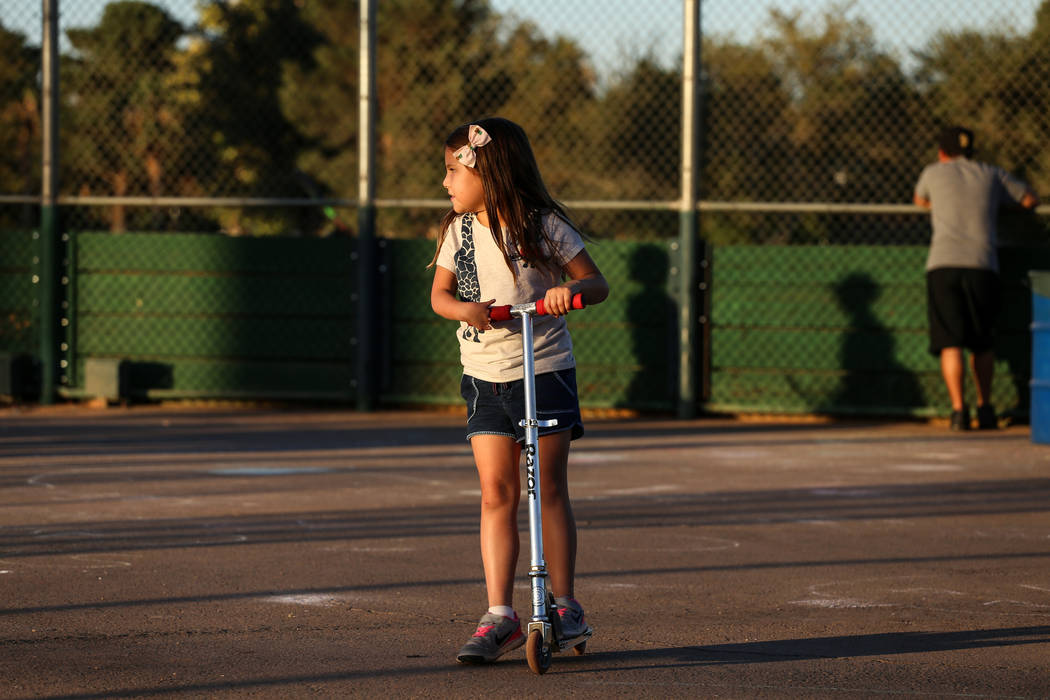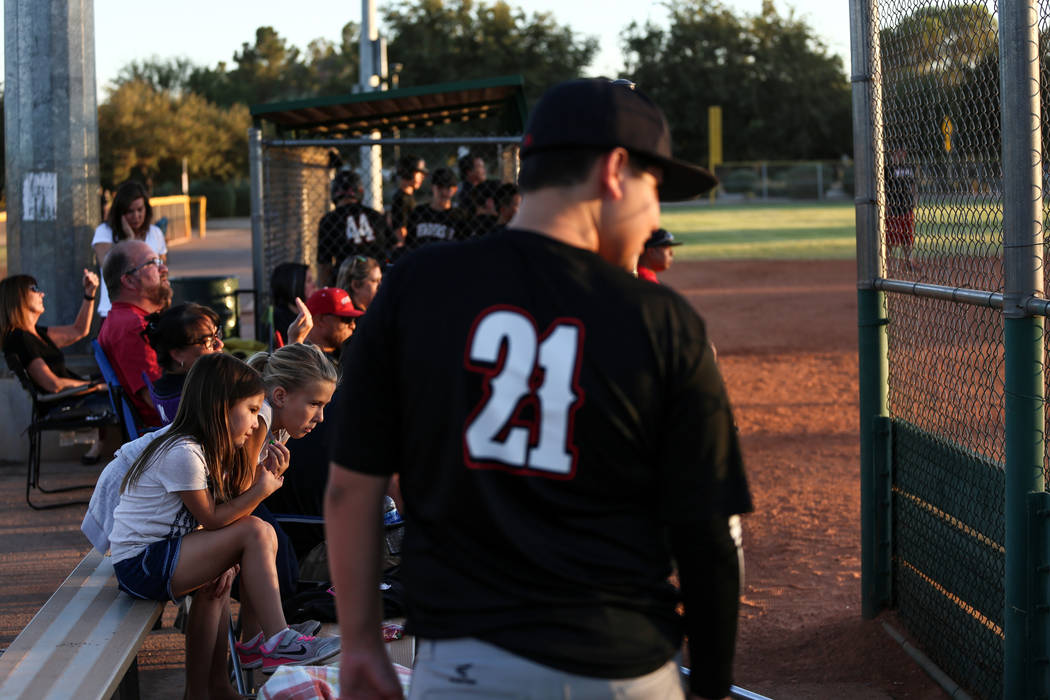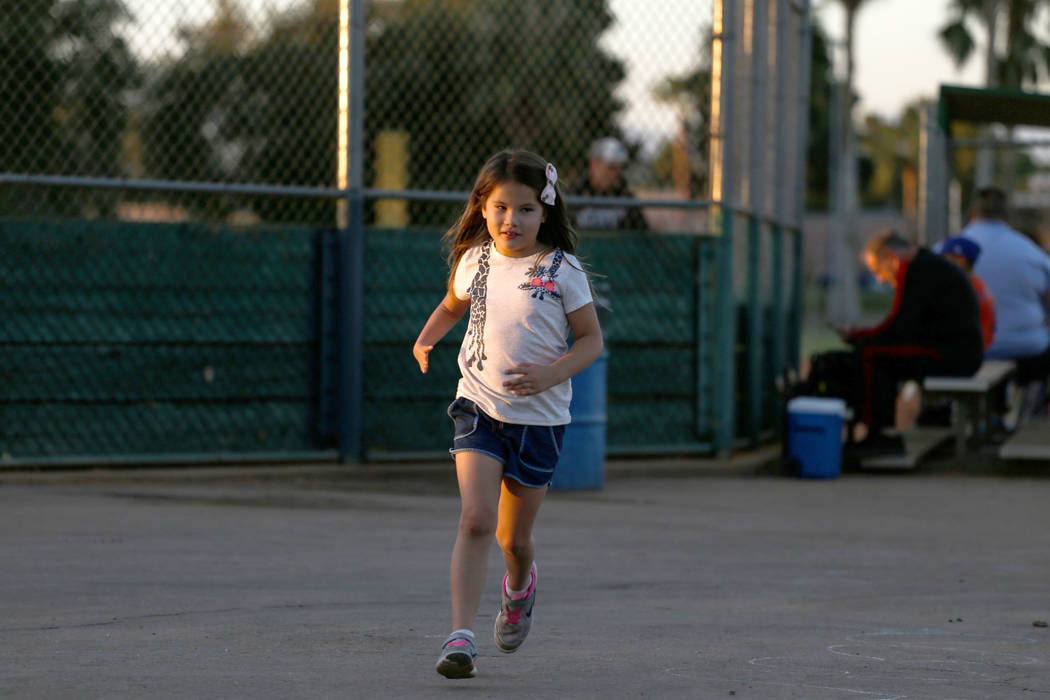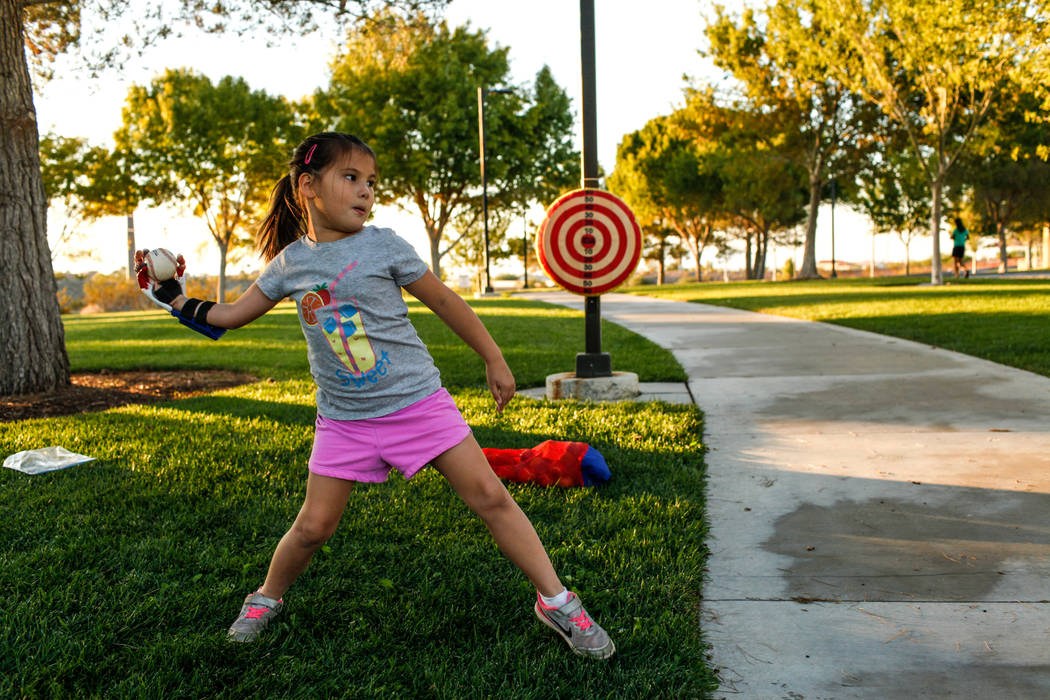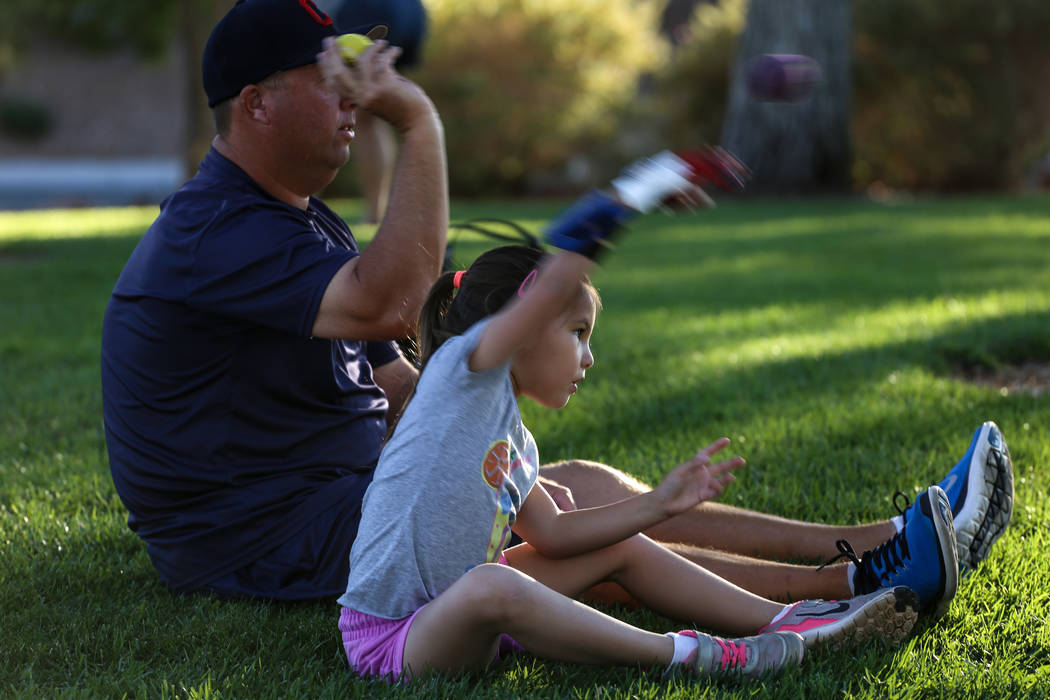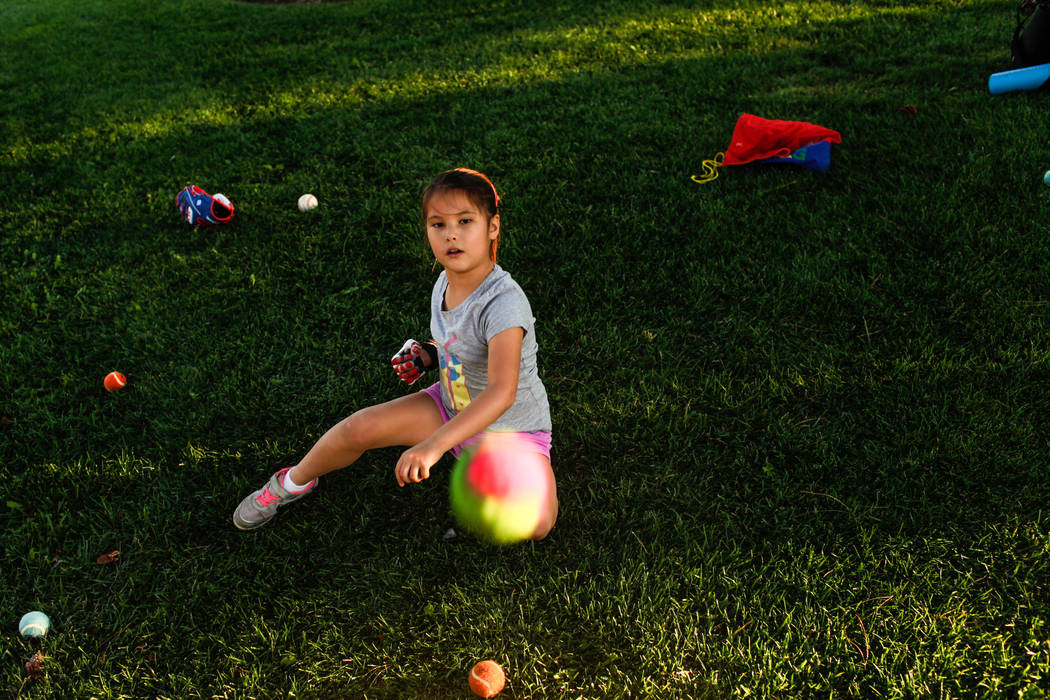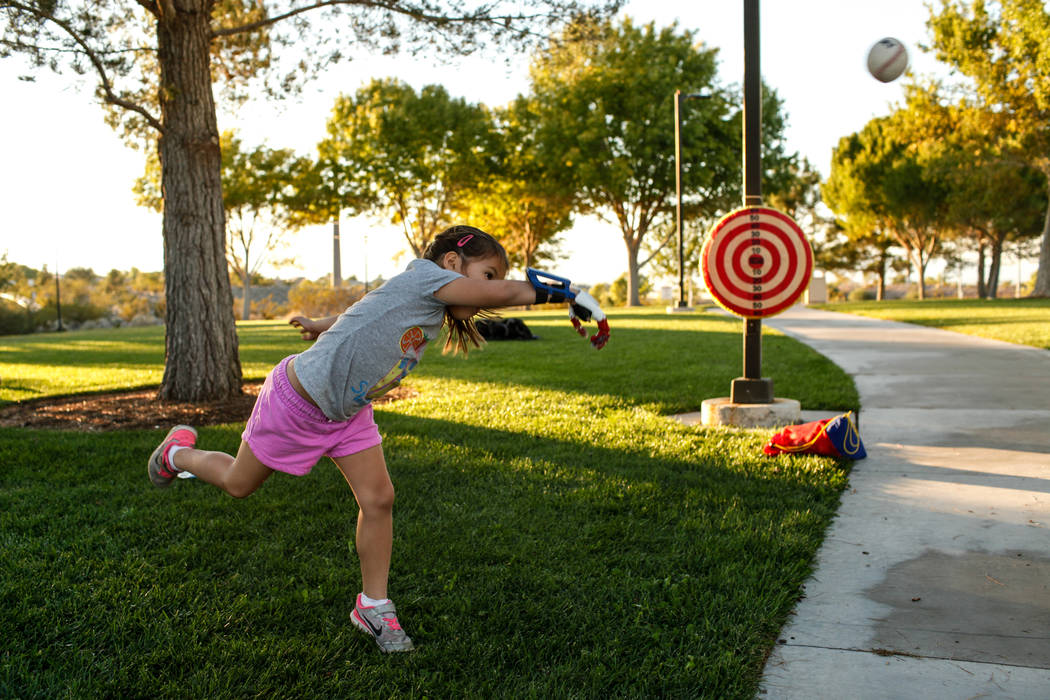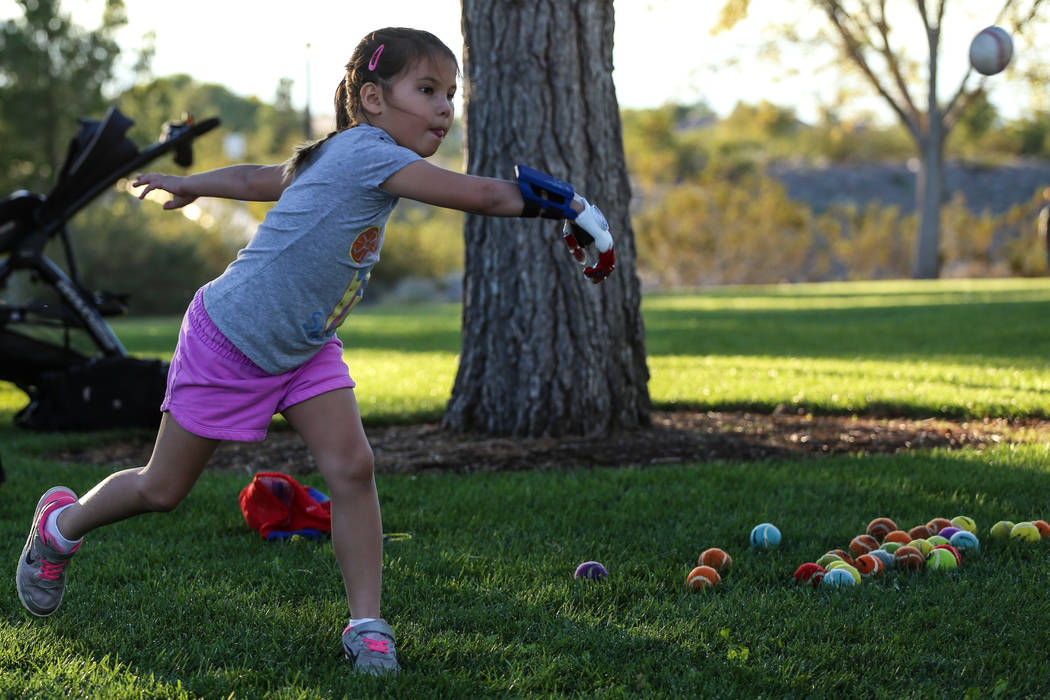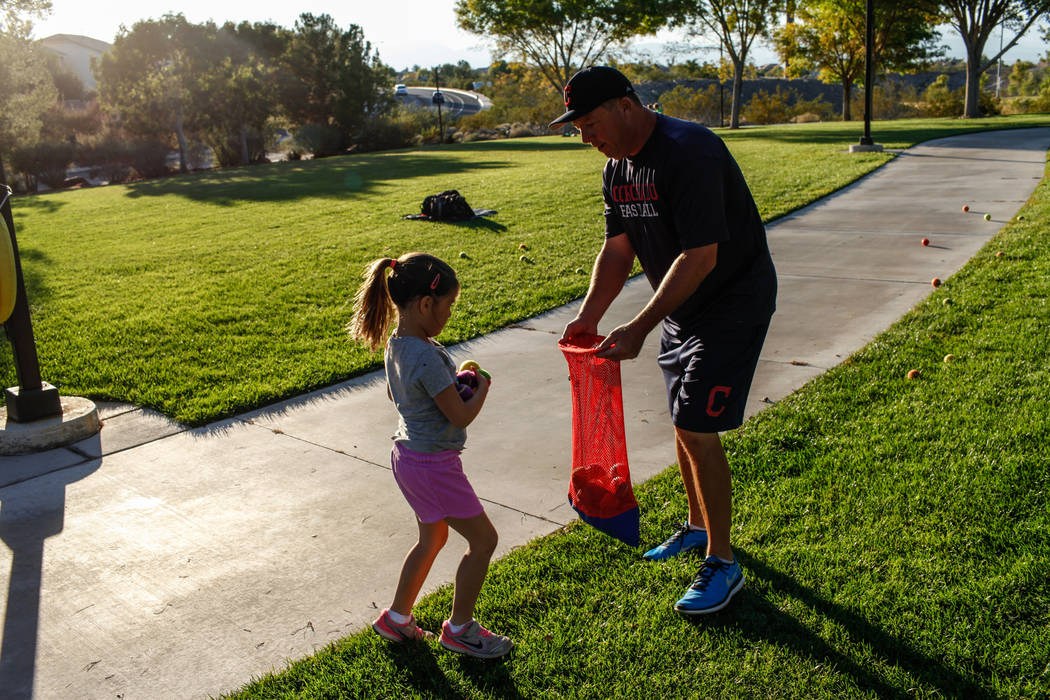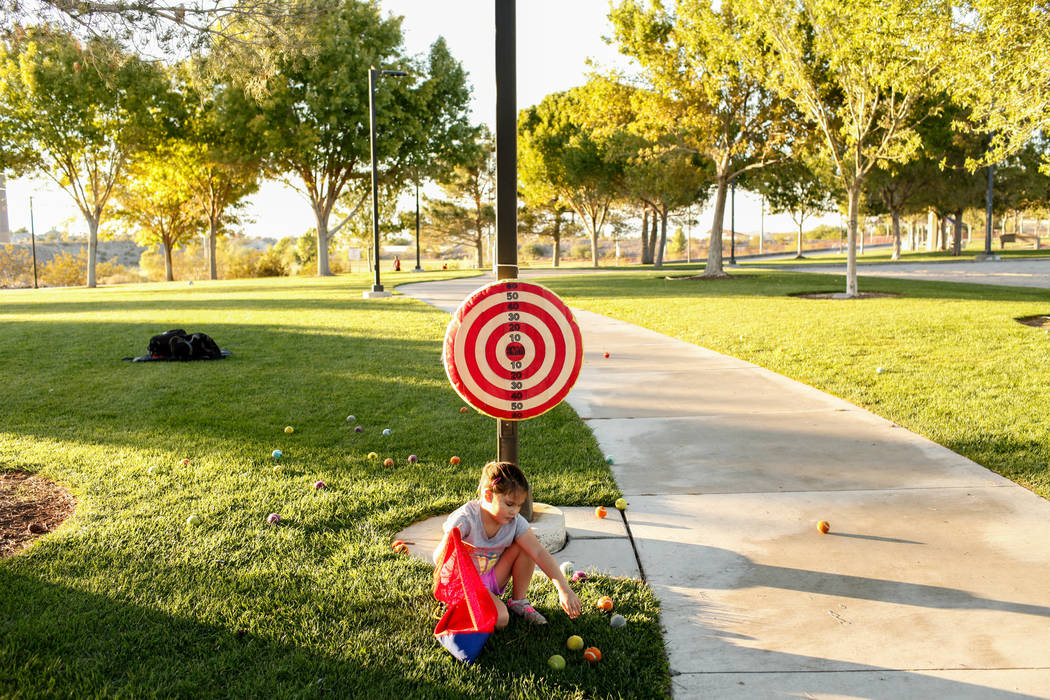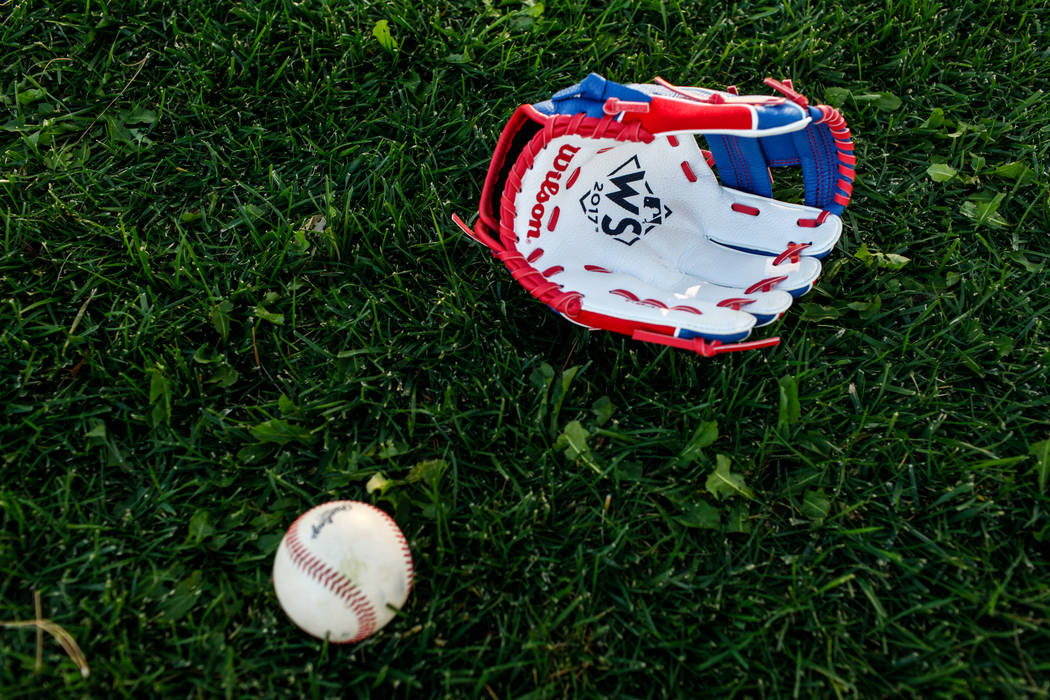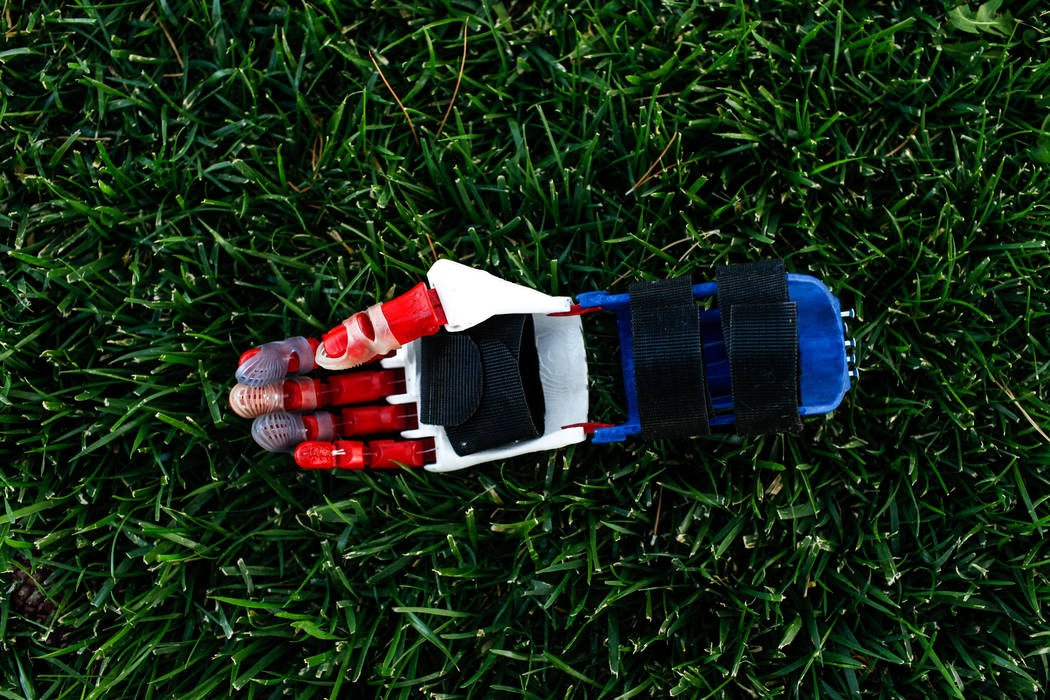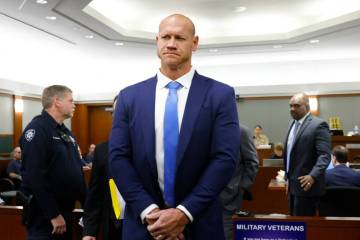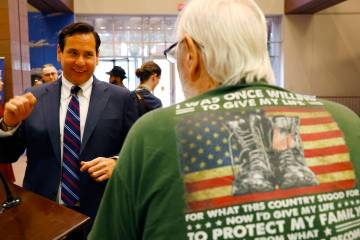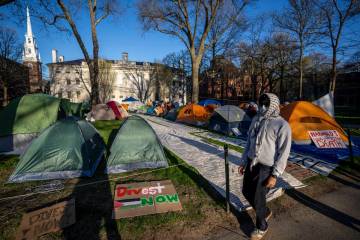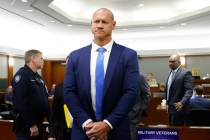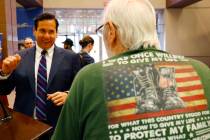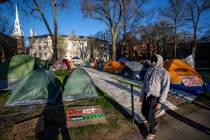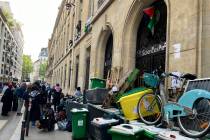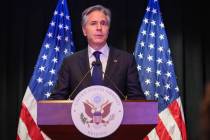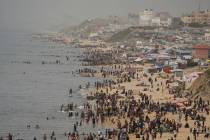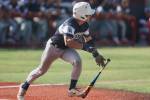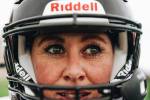Las Vegas girl ready for World Series pitch
Late in the afternoon in early October, the Dawson family gathered to watch son Zach’s baseball game.
The youngest member of the family, Hailey, 7, had other ideas.
When her parents, Greg and Yong Dawson, sat down on the metal bleachers at Sunset Park, Hailey scampered off with her friends to play on scooters and eat snacks, only returning briefly twice at her mother’s request to answer a few questions before rejoining her friends.
The second-grader has done many interviews since a Bleacher Report tweet detailing her dream to throw out a first pitch at every Major League Baseball park went viral in early September. Many more interviews no doubt lie ahead as Hailey takes the field Saturday at Minute Maid Park in Houston before Game 4 of the World Series to throw out the first pitch. The Series begins on Tuesday in Los Angeles.
Born with Poland syndrome, a rare disorder that left her with an underdeveloped right hand, Hailey uses a 3-D printed prosthetic hand engineered at UNLV to grip and throw a baseball.
The story of the Henderson girl warmed hearts around the baseball world, earning her invitations from the 28 MLB teams whose parks she hadn’t already thrown out a pitch at and helping her score an invite to the sport’s biggest stage.
Living with Poland syndrome
The Dawsons could tell something was different from the ultrasound, but it wasn’t until about a week after Hailey was born that the couple found out exactly what that was.
A specialized pediatric orthopedic doctor took off Hailey’s onesie and had the answer immediately.
Poland syndrome, which the National Library of Medicine describes as “a disorder in which affected individuals are born with missing or underdeveloped muscles on one side of the body, resulting in abnormalities that can affect the chest, shoulder, arm and hand,” affects just a small percentage of people.
There are no reliable statistics for how often it occurs, though the National Institutes of Health projects it might be 1 in every 30,000 people.
In Hailey’s case, she is missing her pectoral muscle on the right side of her body, and the lack of blood supply accounted for the underdevelopment of her hand, her mother said.
But Hailey, a spunky little girl who likes playing with her friends and playing Minecraft on the iPad, hasn’t let that stop her from doing anything. She played T-ball last year, swam this summer and plans to play softball this spring.
“I just feel like she’s the kind of little girl that, if she sets her mind to it, her hand’s not going to hold her back from doing it,” her first-grade teacher Sheri Kabo said.
Hailey’s new hand
Three years ago, Yong Dawson sent a life-changing email.
It was 2014, and the couple had already had some hiccups trying to get a hand made for Hailey.
She had seen a report on Facebook about the Robohand, a 3-D printed mechanical prosthetic hand, so she knew it would be possible — it was just a matter of getting in touch with the right people.
Yong sent off an email to UNLV’s dean of engineering, who passed it along to the professors in the department.
“Normally when I walk into a situation like this, I was selling them on why they should do this for my daughter,” she said. “Two of the professors emailed me and asked me to come in, and when we met, they sold me. They were trying to sell me on picking them.”
She did.
Mohamed Trabia, the associate dean for research, graduate studies and computing, and Brendan O’Toole, professor and chairman of the Department of Mechanical Engineering, picked up the project.
“We had been working with robotics with eight years. We had coached robotic teams. We had been working with 3-D printers for about 10 years, so it caught my interest just because it was a combination of robotics and 3-D printing and a cool story,” O’Toole said. “A little girl needed a hand because she wanted to play baseball and ride a bike.”
Along with a team of students, they dove into the project.
O’Toole initially had to research the Robohand, because he had never heard of it. They found other designs online, too, for the Flexy-Hand and Flexy-Hand 2.
Hailey’s hand is a variation of the Flexy-Hand 2, though at this point, the UNLV team has its own computer-aided design drawings of hands and have added different features to increase the hand’s function.
To build a hand, UNLV engineers took molds and measurements of Hailey’s hand. After the design file is created, the big printer that develops the primary hard parts might run for up to 24 hours. A smaller printer that produces the flexible parts — like the joints — takes only a couple hours, O’Toole said.
Parts are transferred to a bin, where they soak until all the support material comes off.
Then the hand needs to be assembled — fingers put in place and the fishing line threaded through, among other things — and painted before it goes to Hailey and adjustments are made if necessary.
In total, around 30 parts make up the hand.
Since printers are used for other projects and no one’s full-time job is working on the hand, a comfortable pace is about two weeks from when they’re ready to print the hand to when it’s complete, O’Toole said.
The quickest the work could be done is just a few days, but generally it takes longer than that to complete a hand.
Along with O’Toole and Trabia, lab director Jeff Markle oversees the 3-D printing, and three students in the lab — graduate student Maria Gerardi and undergraduates Sophia Leon and Patrick Messimer, among others — help out.
“Doing this, you’re just seeing parts, but being able to watch them use it and basically change their life, it’s a remarkable feeling,” said Gerardi, who has been working on the project for three years. “It’s something that you just want to keep have happening, so that you can still feel it, keep feeling like that and that your free-time work is not for nothing.”
Her journey
Over the course of a season, John Angelos receives countless letters, emails and tweets from fans.
The executive vice president of the Baltimore Orioles and president and chief operating officer of the team’s television station, MASN, tries to address them all, but some stay with him longer than others.
“I can probably count on one hand the ones that have really stood out,” Angelos said.
Yong Dawson’s 2015 letter — complete with press clippings, pictures and information about her little girl’s prosthetic device — was one of those letters.
Earlier that year, Hailey had thrown out the first pitch at a UNLV baseball game.
About a month later, she made a request.
“Mom, can I throw out the pitch for the big Orioles?” Hailey asked her mother.
The big Orioles were the Baltimore Orioles — the family’s favorite team, thanks to Greg Dawson, who grew up in Maryland — and the little Orioles were brother Zach’s Little League team.
So Yong Dawson wrote a two-page letter and sent it to eight different executives.
It landed in the right hands.
On Aug. 17, 2015, with her brother Zach standing next to her and outfitted with a special Orioles-themed hand, Hailey tossed a ball out to her favorite player, third baseman Manny Machado.
“This was something that seemed big and important for a little girl and big and important for a family and something that seemed to be really directed toward a cause, so I was really struck by that,” Angelos said.
In conjunction with the pitch, the Orioles promoted awareness of affordable prosthetic technology for children on MASN and used the team’s social platforms to create awareness of what Hailey was doing.
‘What ballpark next?’
Hailey’s next major league first pitch came in June at Nationals Park in Washington, D.C.
After receiving a hand with the presidential seal for a trip to the White House, Hailey returned home one day and decided she wanted Las Vegans Bryce Harper and Kris Bryant to sign it.
Then the Dawsons took to Instagram.
“I’m Hailey Dawson, and I have one wish,” she said in an Instagram video dated Feb. 8. “I want Kris Bryant and Bryce Harper to sign my robot hand. Can you help me make this happen?”
In just a few days, she met both of them.
The post generated a response from Harper in just minutes, and within hours, the Dawsons met Harper in a Vons parking lot, where Hailey asked him about throwing out a pitch in Washington.
Months later, Harper sat behind the plate as Hailey threw out a pitch to him.
The first questions after she finished were, “What’s next? Who’s next? Where are we going next? What ballpark next?” That spawned the current goal.
When Hailey’s Bleacher Report video went viral, teams responded instantly, inviting her to their towns.
United Airlines pitched in offering free flights for the family for the journey, which the Dawsons hope to complete next season.
“It’s got the impact now,” Yong Dawson said. “We want to spread the awareness about what she has and about the robotic hand, so I figure get it done as soon as we can to make the most impact.”
MLB gets involved
She’ll have the chance to knock off one new park next weekend.
As the story spread on social media, people in Major League Baseball’s head office took notice and quickly sprang into action with the World Series invite.
The call came a day after Hailey’s story went viral and left her mother in tears.
“We love to recognize fans who are close to the sport and have a love of the sport who are doing inspirational things,” MLB Vice President of Business Public Relations Matt Bourne said. “This story just spoke to us and spoke to the teams.”
And so on Saturday, Hailey will take the field next to her brother and throw the biggest pitch of her young life. Hailey said she was excited, not nervous for the big opportunity.
“Who gets to go to the World Series, and then who gets to throw out a first pitch?” her mother said. “There’s no way I would have even dreamt of it, but it’s happening.”
Contact Betsy Helfand at bhelfand@reviewjournal.com. Follow @BetsyHelfand on Twitter.




